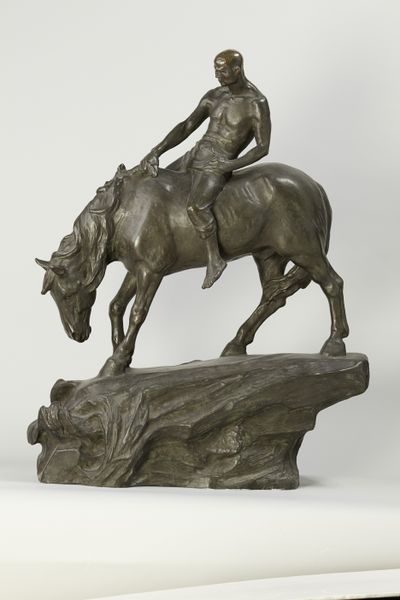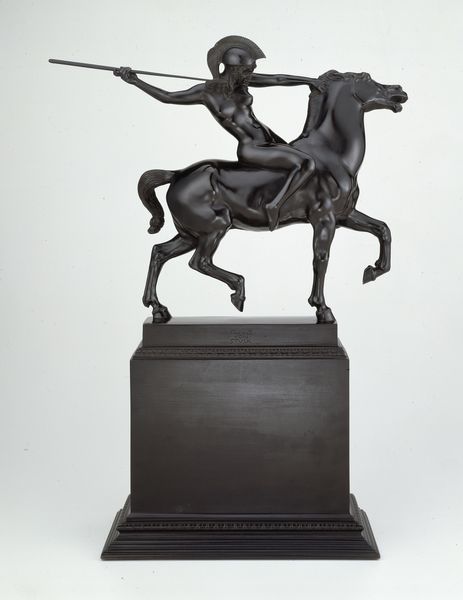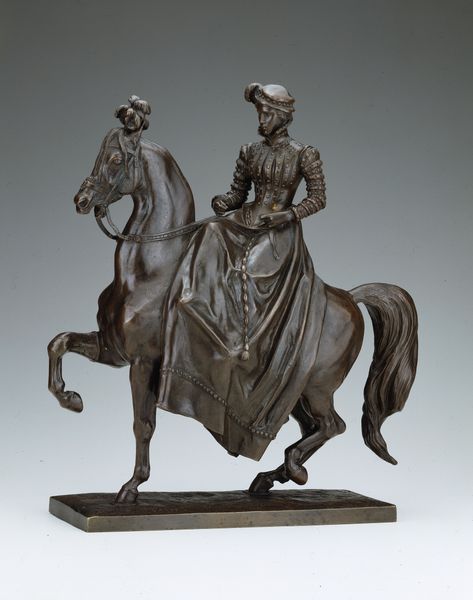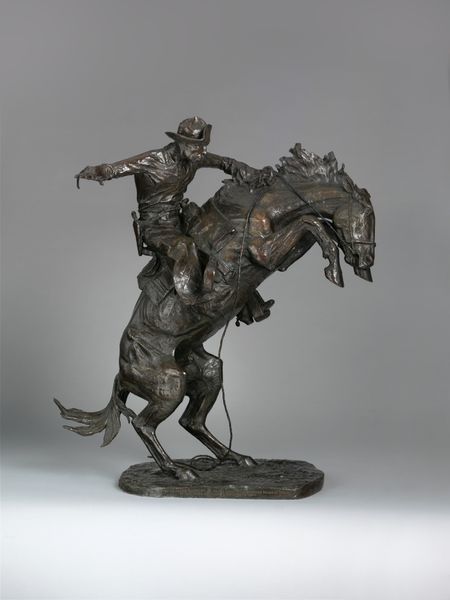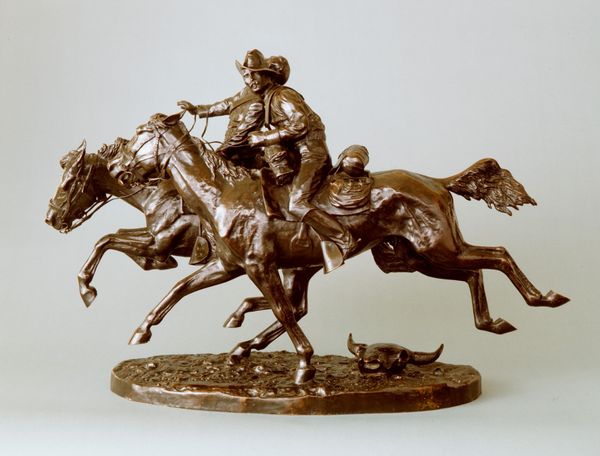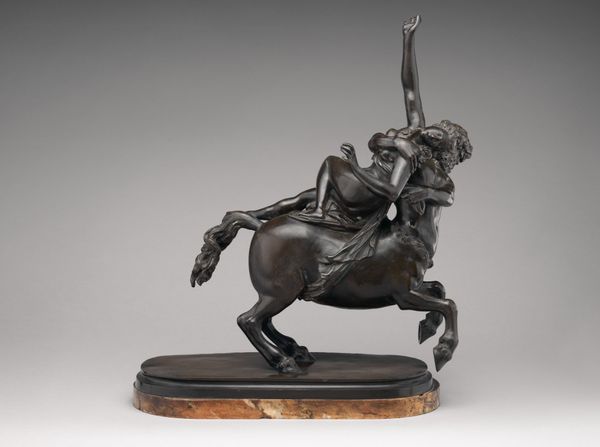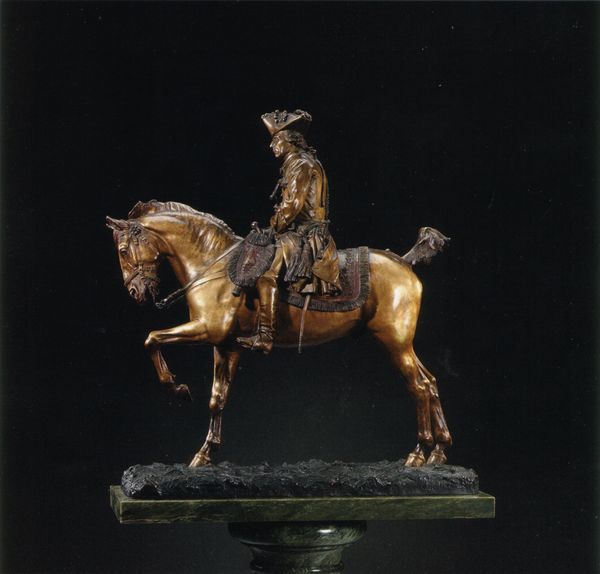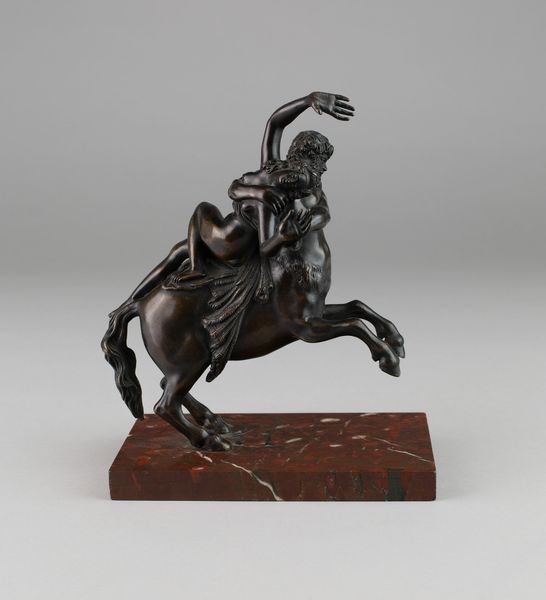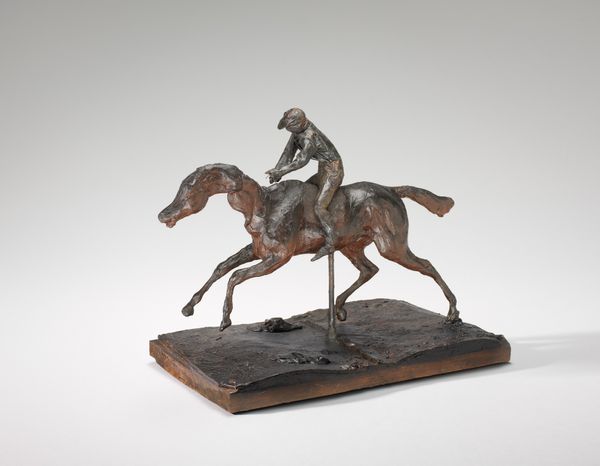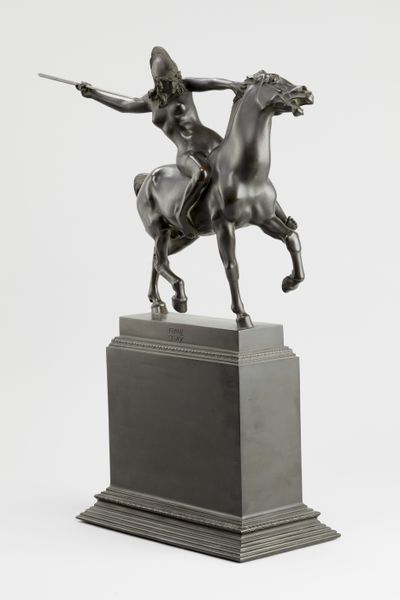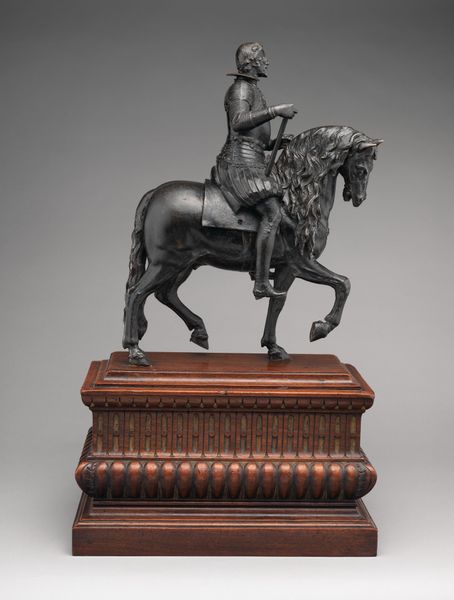
Dimensions: 51.8 × 36.2 × 19 cm (20 3/8 × 14 1/4 × 7 1/2 in.)
Copyright: Public Domain
Curator: This bronze sculpture is entitled "African Hunter" and was crafted by Pierre-Jules Mêne in 1877. You can find it here at the Art Institute of Chicago. Editor: Immediately, the scale and the detailed texture of the bronze grab my attention. It evokes a sense of ruggedness and evokes this Victorian ideal of the hunt and taming nature, wouldn’t you agree? Curator: Indeed. Mêne was known for his animal sculptures. This piece really speaks to the romanticization of exotic lands and their inhabitants during the colonial era. It presents a constructed image of African masculinity, heroism, and stoicism, very popular within European art circles. Editor: It's interesting to see how Mêne translates his observation of form and craft into a specific narrative. I'm looking at the detailing on the horse’s musculature as well as the hunter’s garb; even the slain animal at the horse’s feet has meticulous marks to showcase how the material renders those features. You know? It brings up the interesting contrast between fine art and functional object-making of the time. Curator: The sculpture was made during a time when European powers were solidifying their control over Africa, an endeavor in resource extraction. The art at that time frequently functioned to justify their colonial project as part of a civilizing mission, where Europeans would claim to improve the lands and cultures of colonized peoples. Editor: You see, the tension comes alive through the bronze. The artist uses the material’s potential to render realism but simultaneously romanticize the act. How would such sculpture fit within collections during this period and what spaces did it occupy? Curator: These bronze sculptures were highly collectible items among the European upper classes, usually gracing their drawing rooms and serving as statements of taste, wealth, and the validation of the dominant ideologies. Editor: So we have this very crafted object functioning almost like a status symbol while simultaneously reflecting and furthering those skewed ideas and ideals, all manifested via materiality and craft? Curator: Precisely, which demonstrates art’s powerful role in shaping public opinion and preserving those social hierarchies. Editor: The layers in this piece spark broader questions about what we value in representation. Food for thought!
Comments
No comments
Be the first to comment and join the conversation on the ultimate creative platform.
